



George Clark Stanton RSA (11 June 1832- 8 January 1894) was a 19th-century Scottish sculptor, silversmith and portrait miniaturist. [1] [2]




George Clark Stanton RSA (11 June 1832- 8 January 1894) was a 19th-century Scottish sculptor, silversmith and portrait miniaturist. [1] [2]
Stanton was educated at King Edward's School, Birmingham and Birmingham School of Art, initially training as a silversmith. In Birmingham he was employed by Elkington & Mason. Some of his work from there is now in the Victoria and Albert Museum in London. He allegedly joined Garibaldi's Redshirts during a trip to Florence, Italy. During this trip he met Clara Camgee, who later became his wife. [3]
In 1855 he moved to Edinburgh, living first at 21 Dublin Street then at 1 Ramsay Lane. He also lived at 24 (now 38) Upper Gray Street. [3]
In 1862 he was elected an associate of the Royal Scottish Academy and in 1885 became a full member.
From 1879 he was Curator of the Royal Scottish Academy Life School.
He lived his final years at Ramsay Lane (part of Ramsay Gardens). [4]
His son, John George Stanton, was also an artist.u

Sir John Robert Steell was a Scottish sculptor. He modelled many of the leading figures of Scottish history and culture, and is best known for a number of sculptures displayed in Edinburgh, including the statue of Sir Walter Scott at the base of the Scott Monument.

The Scott Monument is a Victorian Gothic monument to Scottish author Sir Walter Scott. It is the second largest monument to a writer in the world after the José Martí monument in Havana. It stands in Princes Street Gardens in Edinburgh, opposite the former Jenners building on Princes Street and near Edinburgh Waverley Railway Station, which is named after Scott's Waverley novels.

Sir William Reid Dick, was a Scottish sculptor known for his innovative stylisation of form in his monument sculptures and simplicity in his portraits. He became an Associate of the Royal Academy in 1921, and a Royal Academician in 1928. Dick served as president of the Royal Society of British Sculptors from 1933 to 1938. He was knighted by King George V in 1935. He was Sculptor in Ordinary for Scotland to King George VI from 1938 to 1952 then held the post under Queen Elizabeth until his death in 1961.

William Calder Marshall ARSA was a Scottish sculptor.

Charlotte Square is a garden square in Edinburgh, Scotland, part of the New Town, designated a UNESCO World Heritage Site. The square is located at the west end of George Street and was intended to mirror St. Andrew Square in the east. The gardens, one of the collection of New Town Gardens, are private and not publicly accessible.
Alexander Carrick was a Scottish sculptor. He was one of Scotland's leading monumental sculptors of the early part of the 20th century. He was responsible for many architectural and ecclesiastical works as well as many war memorials executed in the period following World War I. As head of sculpture at Edinburgh College of Art, and as a leading member of the Royal Scottish Academy, Carrick had a lasting influence on Scottish sculpture.
William Birnie Rhind RSA (1853–1933) was a Scottish sculptor.

Ramsay Garden is a block of sixteen private apartment buildings in the Castlehill area of Edinburgh, Scotland. They stand out for their red ashlar and white harled exteriors, and for their prominent position, most visible from Princes Street.

John RhindARSA (1828–1892) was a Scottish sculptor, based in Edinburgh. He was born in Banff the son of a master mason. He was trained under Alexander Handyside Ritchie (1804–1870). He served this apprenticeship in a yard at 4 East Broughton Place.

Alexander Handyside Ritchie was a Scottish sculptor born in Musselburgh in 1804, the son of James Ritchie, a local brickmaker and ornamental plasterer, and his wife Euphemia. The father in turn was the son of a fisherman and amateur sculptor.
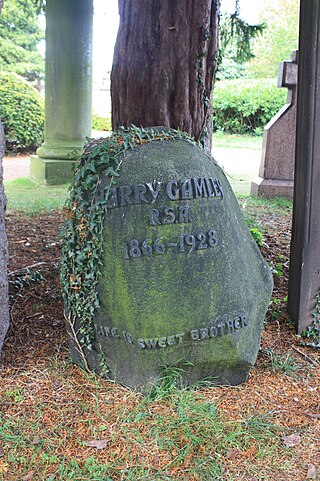
Henry Snell Gamley (1865–1928) was a Scottish sculptor specialising in war memorials and sculpture on tombs. He was however also responsible for other figurative sculpture on prominent Edinburgh buildings such as the Usher Hall and works at Holyrood Palace.
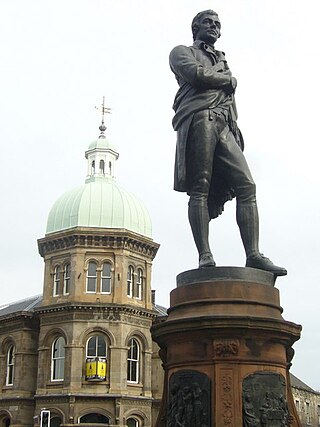
David Watson Stephenson was a Scottish sculptor, executing portraits and monuments in marble and bronze.
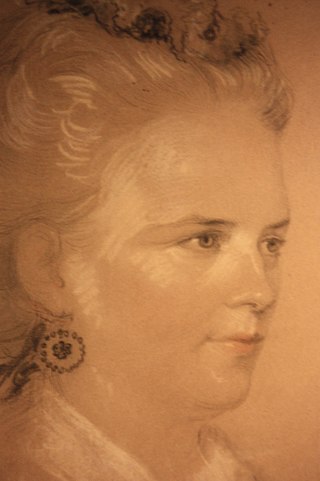
Amelia Robertson Hill, birth record Emmilia McDermaid Paton, was a prominent Scottish artist and sculptor throughout the 19th century and one of the few with public commissions. Her most noteworthy works are the statue of David Livingstone in Princes Street Gardens, Edinburgh and statue of Robert Burns in Dumfries. She was the main female contributor to the statues on the Scott Monument, contributing three figures.

John Hutchison was a Scottish sculptor based in Edinburgh. He was the son of an unnamed builder, and his artistic life began as a thirteen-year-old woodcarving apprentice. He attended art school in the evenings, then later became a student at the Trustees Academy. and attracted the patronage of its owner, Patrick Allan Fraser, who gave him commissions to fund his study in Rome. Although after Rome he continued to enjoy ancient Roman sculptural themes, he remained in Edinburgh for the rest of his life, working in wood, clay and marble, and concentrating on portraiture of Scottish people, and images of Scottish myth and history. He created the bust of Sir Walter Scott in Poets' Corner in Westminster Abbey. He was a successful artist who received commissions from Queen Victoria.
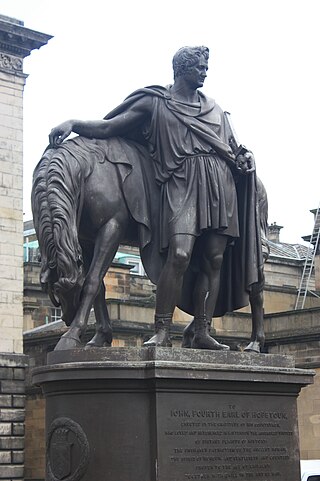
Thomas Campbell was a Scottish sculptor in the early 19th century. He has several important public works, most notably a statue of Sarah Siddons in Westminster Abbey. He also has several works in the National Gallery in London. He was heavily patronised by the British aristocracy, as evidenced by his works.

Thomas Stuart Burnett ARSA was a Scottish sculptor in the 19th century.

William Shirreffs was a Scottish sculptor in the 19th century.
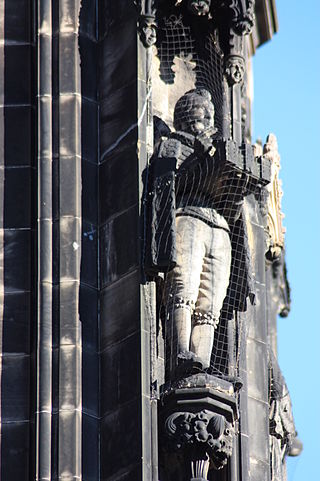
Peter Slater RA (1809–1860) was a 19th-century Scottish sculptor and portrait artist. His name sometimes appears as J. P. Slater.
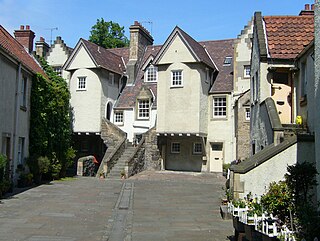
William Dick was a Scottish veterinarian and founder of the Dick Vet School in Edinburgh, the first veterinary college in Scotland. He is responsible for major advances in the field of veterinary science and the profession as a whole.